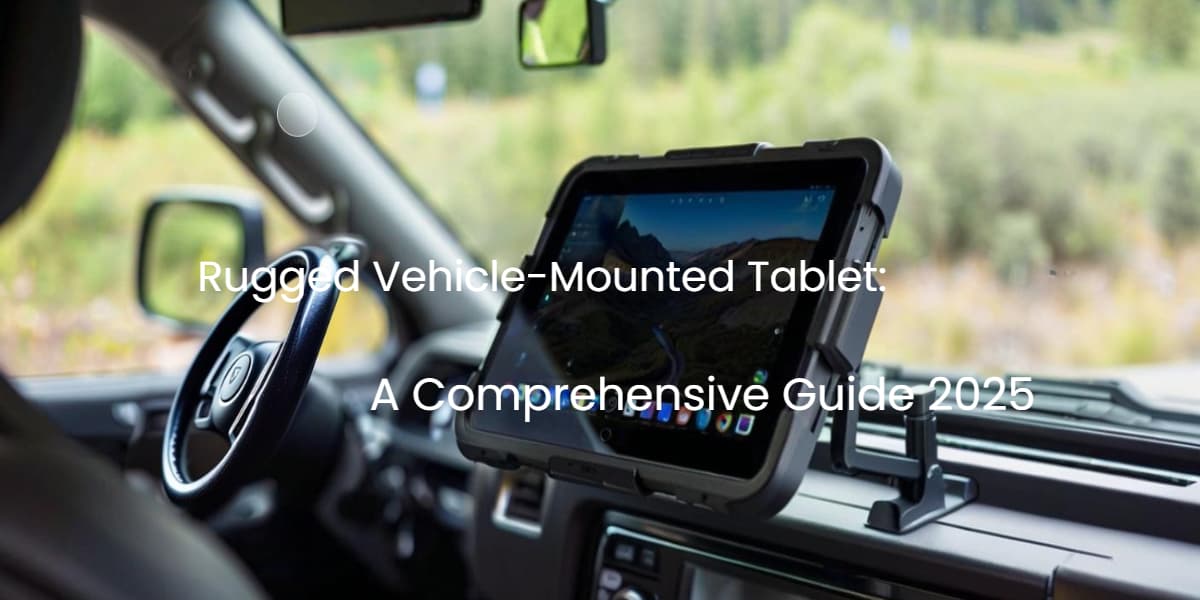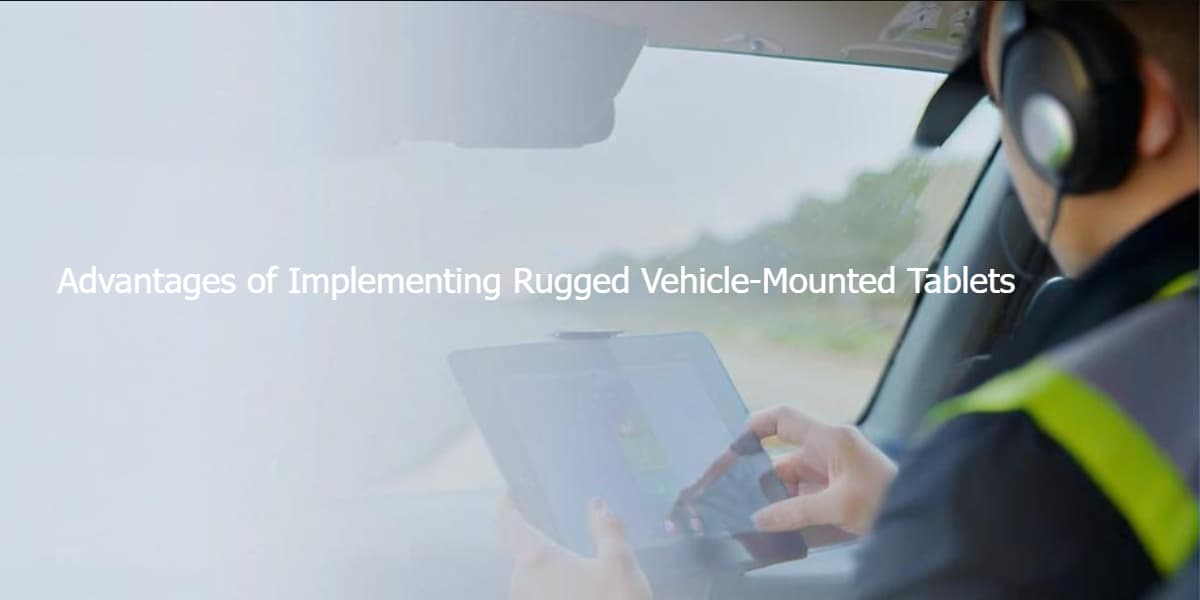In today’s demanding industrial and field environments, the need for robust and reliable technology is paramount. Rugged vehicle-mounted tablets have emerged as essential tools across various sectors, including transportation, construction, and emergency services. These devices are engineered to withstand harsh conditions while providing the computing power necessary for complex tasks. This guide delves into the critical factors to consider when selecting a rugged vehicle-mounted tablet, ensuring you make an informed decision tailored to your operational needs.

Understanding Rugged Vehicle-Mounted Tablets
Rugged vehicle-mounted tablets are specialized computing devices designed for installation in vehicles operating under challenging conditions. Unlike standard consumer tablets, these devices are built to endure extreme temperatures, vibrations, shocks, and exposure to dust and moisture. They are indispensable in industries such as logistics, mining, and military operations, where durability and reliability are crucial.
Limitations of Traditional Mobile Devices in Industrial Settings
Conventional mobile devices often fall short in demanding environments due to:
- Fragility: Susceptibility to damage from drops, vibrations, and exposure to elements.
- Limited Environmental Resistance: Inadequate protection against dust, water, and extreme temperatures.
- Insufficient Battery Life: Inability to sustain prolonged use without frequent recharging.
These shortcomings can lead to increased downtime, higher maintenance costs, and compromised worker safety.
Challenges Faced by Field Workers in Complex Environments
Field workers often encounter obstacles such as:
- Inconsistent Connectivity: Difficulty in maintaining communication with central operations.
- Data Accessibility Issues: Challenges in retrieving and inputting critical information on the go.
- Equipment Vulnerability: Risk of device failure due to environmental stressors.
Addressing these challenges necessitates the deployment of technology that is both resilient and capable of seamless integration into existing workflows.

Key Features to Consider When Choosing a Rugged Vehicle-Mounted Tablet
When selecting a rugged vehicle-mounted tablet, evaluate the following attributes:
1. Durability and Ruggedness
- Certifications: Look for devices meeting MIL-STD-810G standards for shock and vibration resistance and IP ratings (IP65 or higher) for dust and water protection.
- Build Quality: Ensure the tablet has a robust construction with reinforced casings and shock-absorbing materials.
2. Environmental Adaptability
- Operating Temperature Range: Confirm the device functions effectively within the temperature extremes of your operational environment.
- Humidity and Altitude Tolerance: Assess the tablet’s performance under varying humidity levels and altitudes, especially for applications in diverse geographic locations.
3. Display Characteristics
- Visibility: Opt for screens with high brightness and anti-glare properties for readability in direct sunlight.
- Touchscreen Responsiveness: Ensure the touchscreen is responsive to gloved inputs, a necessity in many industrial settings.
4. Performance and Hardware Specifications
- Processing Power: Select a tablet with a capable processor to handle your specific applications without lag.
- Memory and Storage: Adequate RAM and storage capacity are essential for multitasking and data-intensive tasks.
5. Battery Life and Power Management
- Extended Battery Options: Long battery life is crucial for uninterrupted operation; consider devices with hot-swappable battery capabilities.
- Power Efficiency: Evaluate the tablet’s power consumption to ensure it aligns with your operational duration needs.
6. Connectivity and Integration
- Wireless Capabilities: Ensure support for Wi-Fi, Bluetooth, and cellular networks to maintain communication and data transfer.
- Peripheral Compatibility: Check for necessary ports and compatibility with existing vehicle systems and accessories.
7. Mounting and Ergonomics
- Secure Mounting Solutions: The tablet should come with or support mounting hardware that ensures stability and safety within the vehicle.
- Ease of Use: Consider the placement and accessibility of buttons and controls for user-friendly operation.
8. Software and Security Features
- Operating System: Choose between Windows or Android platforms based on application compatibility and user preference.
- Security Measures: Look for features like encryption, secure boot, and biometric access to protect sensitive data.

Advantages of Implementing Rugged Vehicle-Mounted Tablets
Integrating rugged vehicle-mounted tablets into your operations offers numerous benefits:
- Enhanced Productivity: Reliable access to data and applications streamlines workflows and decision-making processes.
- Reduced Downtime: Durable devices minimize interruptions caused by equipment failure.
- Improved Safety: Real-time communication and data access contribute to safer working conditions.
- Cost Efficiency: Lower maintenance and replacement costs due to the device’s longevity and resilience.
Common Applications Across Industries
Rugged vehicle-mounted tablets are utilized in various sectors, including:
- Precision Agriculture: Monitoring crop health and managing field operations.
- Transportation and Logistics: Tracking shipments and optimizing delivery routes.
- Military and Defense: Providing situational awareness and secure communication in the field.
- Mining and Construction: Managing equipment and accessing schematics on-site.
Evaluating Total Cost of Ownership (Continued)
A thorough cost-benefit analysis should account for factors beyond the initial purchase price. Rugged vehicle-mounted tablets offer a lower total cost of ownership (TCO) when considering:
- Extended Device Lifespan: Built for durability, these tablets last significantly longer than consumer-grade alternatives.
- Lower Maintenance and Repair Costs: Devices with MIL-STD-810G and IP-rated protection require fewer repairs.
- Reduced Downtime: Reliable performance minimizes disruptions, leading to increased operational efficiency.
- Enhanced Employee Productivity: Providing workers with the right tools helps streamline workflows and decision-making processes.
Conclusion
Choosing the right rugged vehicle-mounted tablet requires careful consideration of durability, performance, connectivity, and adaptability to environmental conditions. Investing in a high-quality rugged tablet not only enhances operational efficiency but also ensures long-term cost savings and workforce productivity.By evaluating the key factors outlined in this guide, businesses can make informed decisions that align with their unique needs.
评论
发表评论